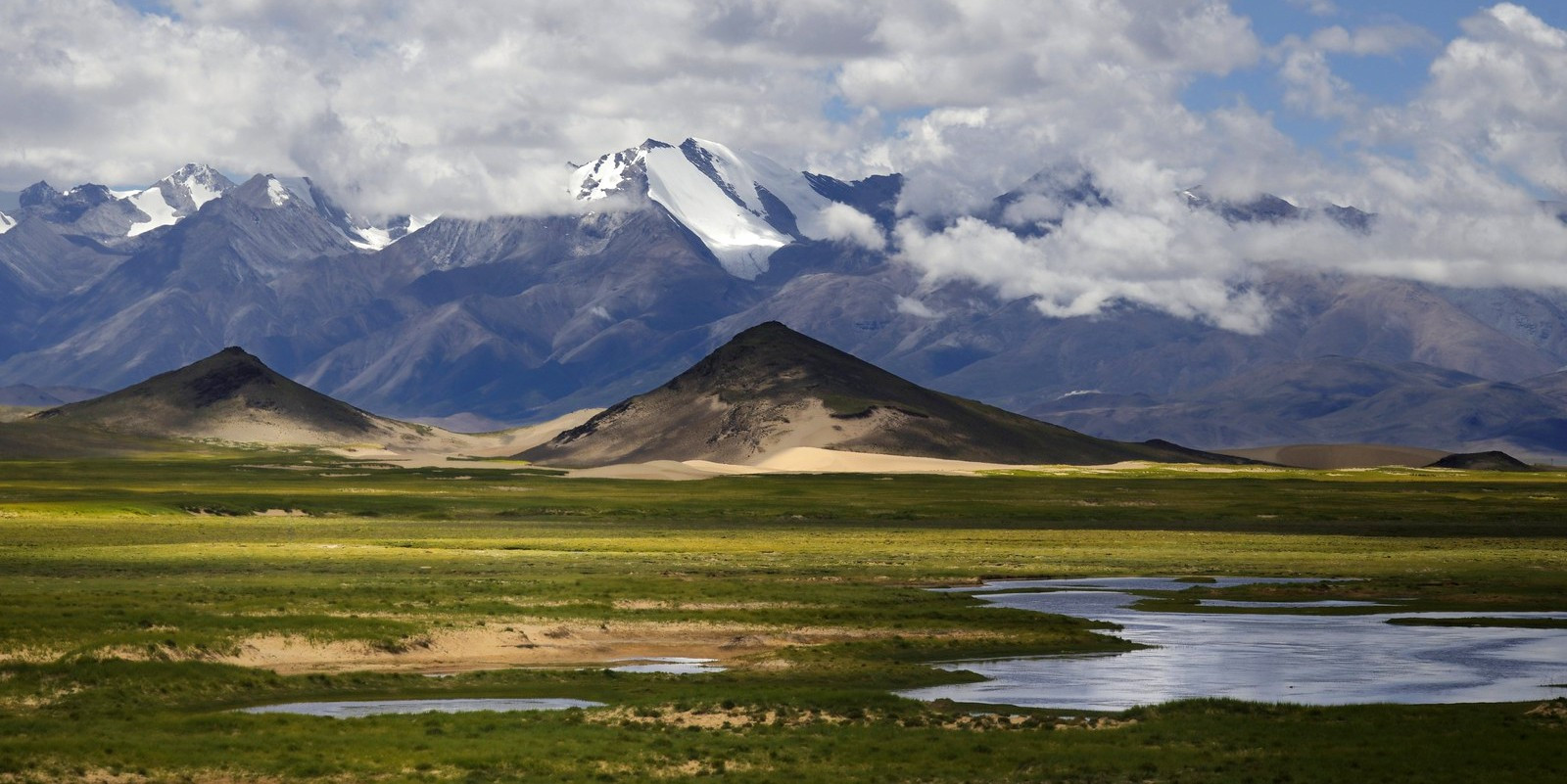Biking Tour in Tibet
A Biking Tour in Tibet is an exhilarating adventure that appeals to cyclists looking for a unique challenge combined with stunning scenery. Riding through Tibet on a bike offers an intimate way to explore the vast, breathtaking landscapes of this high-altitude plateau, while also providing a physical challenge unlike any other due to the thin air at high elevations.
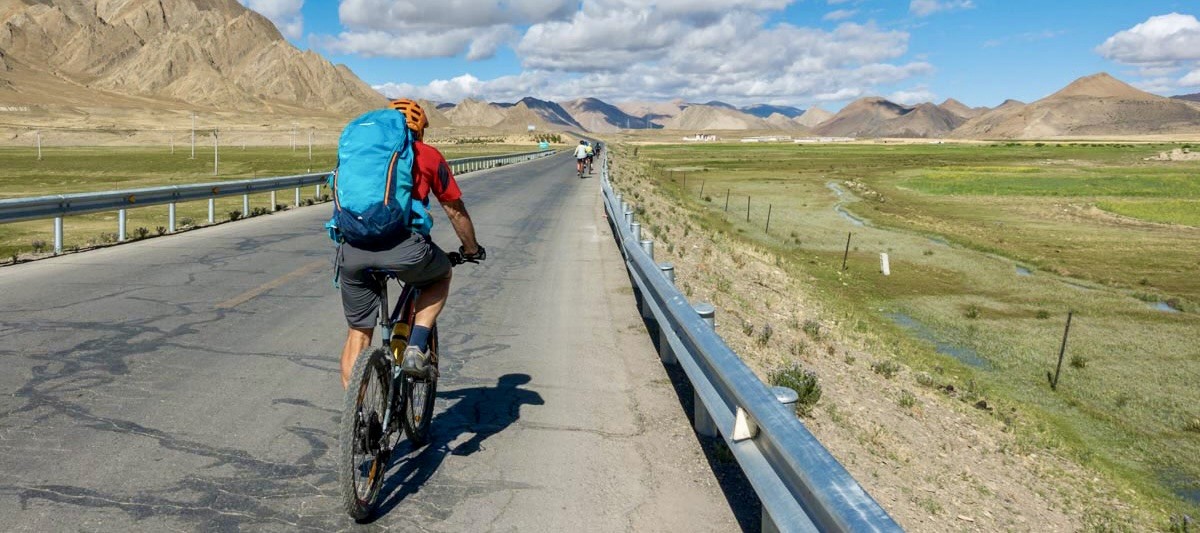
Key Aspects of a Biking Tour in Tibet
-
Routes: One of the most popular routes for a biking tour in Tibet is the journey from Lhasa to Kathmandu. This route covers around 1,000 kilometers and passes through small Tibetan villages, monasteries, and stunning natural landscapes. Other notable routes include Lhasa to Everest Base Camp and the circular route around Namtso Lake, each offering unique sights and challenges.
-
Scenery: The routes typically feature a diverse array of scenery—from rolling grasslands and serene lakes to towering mountains and dramatic passes. Highlights include views of Mt. Everest and other Himalayan giants, the turquoise waters of Yamdrok Lake, and the rugged beauty of the Tibetan Plateau.
-
Cultural Interaction: Biking tours often involve stops in Tibetan towns and villages, offering opportunities to interact with the local Tibetan communities. These stops can provide deeper insight into the traditional Tibetan way of life, including their customs, cuisine, and spiritual practices.
-
Physical Demands: Biking in Tibet is not for the faint of heart due to the high altitude and long distances involved. Acclimatization to the altitude is crucial, as the oxygen levels are significantly lower. Cyclists need to be in excellent physical condition and should prepare for the tour by training in similar altitude conditions if possible.
-
Preparation and Support: Due to the remote nature of many routes, it’s essential to go with a well-organized tour operator like Relax Getaways. Such companies provide support vehicles, experienced guides, and logistical support to handle emergencies, navigate tricky terrains, and manage overnight accommodations.
A Biking Tour in Tibet is more than just a physical challenge; it’s an unforgettable journey through one of the most culturally rich and visually spectacular regions of the world. Whether you are winding your way through mountain passes or cruising past peaceful monasteries, every pedal stroke brings a new discovery and a deeper connection to this ancient land.
Yak Riding in Tibet
Yak Riding in Tibet offers a unique and culturally immersive way to explore the rugged landscapes of this high-altitude region. Known for their resilience and ability to thrive in harsh environments, yaks are an integral part of Tibetan life, used traditionally for transport, wool, and milk. Riding a yak provides a slower, more rhythmic way to take in the vast, breathtaking expanses of the Tibetan plateau, making it a must-try experience for visitors seeking an authentic slice of Tibetan culture.
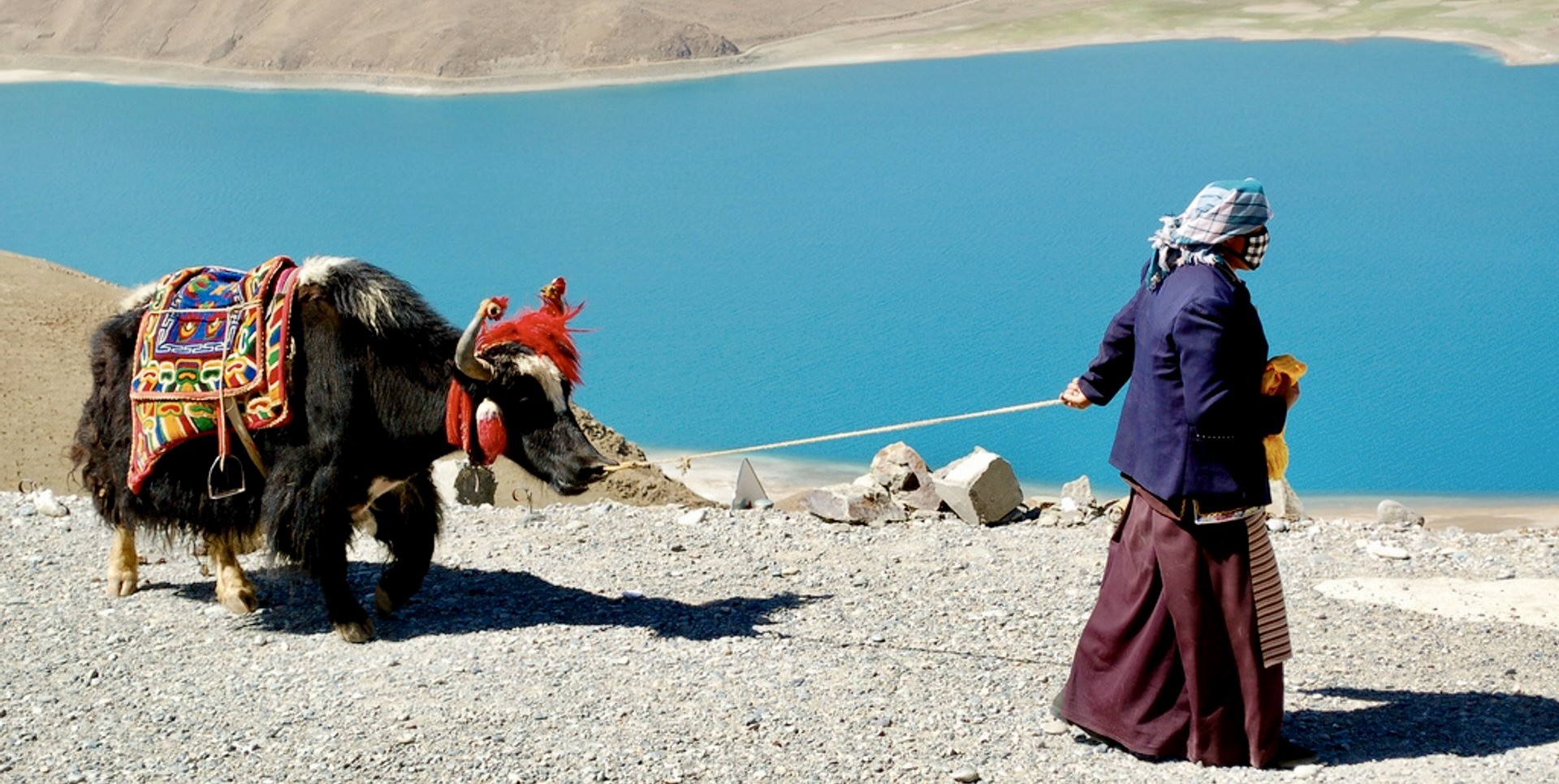
Key Features of Yak Riding in Tibet
-
Unique Experience: Yak riding is a distinctly Tibetan experience, unlike typical horse or camel rides found in other parts of the world. These sturdy animals offer a stable and serene ride, allowing riders to enjoy the scenery without the haste of more modern forms of transport.
-
Scenic Routes: Yak rides typically take place in scenic areas such as the base of Mt. Everest, around beautiful high-altitude lakes like Namtso, or in remote pastoral areas where tourists can witness the untouched beauty of the Tibetan landscape. These rides allow for unparalleled access to some of Tibet’s most remote and stunning locations.
-
Cultural Integration: Riding a yak also provides insight into the traditional lifestyles of Tibetan nomads. Visitors often have the opportunity to visit nomadic camps, interact with local herders, and learn about how yaks are integral to the survival and economy of these communities.
-
Suitable for All Ages: Yak riding is a gentle adventure, suitable for travelers of all ages, including families with children. The calm nature of yaks makes them perfect for leisurely rides through the Tibetan countryside.
-
Photographic Opportunities: For photography enthusiasts, yak riding offers unique opportunities to capture the picturesque landscapes of Tibet from a unique vantage point. The contrast of a rugged yak against the backdrop of snow-capped mountains and sprawling plateaus can add a fascinating element to any travel photo album.
-
Environmental Impact: Opting for yak riding over motorized transport can reduce your carbon footprint, contributing to the preservation of the pristine environments of Tibet.
Yak Riding in Tibet adventure with Relax Getaways means embracing the traditional Tibetan way of life, experiencing the serenity of the natural environment, and creating memories that will last a lifetime. It’s an adventure that’s as enlightening as it is exciting, perfect for those looking to connect deeply with one of the world’s most extraordinary cultures.
Stroll around the Namtso Lake
Strolling around Namtso Lake in Tibet is a profoundly serene experience, often described as a journey through one of the most breathtaking landscapes on earth. Namtso, meaning "Heavenly Lake" in Tibetan, is the largest saltwater lake in the Tibet Autonomous Region and the second-largest saltwater lake in China. It's also regarded as one of the most beautiful and sacred lakes in Tibet. The experience of walking along its shores is not just a feast for the eyes but also a spiritual respite for the soul.
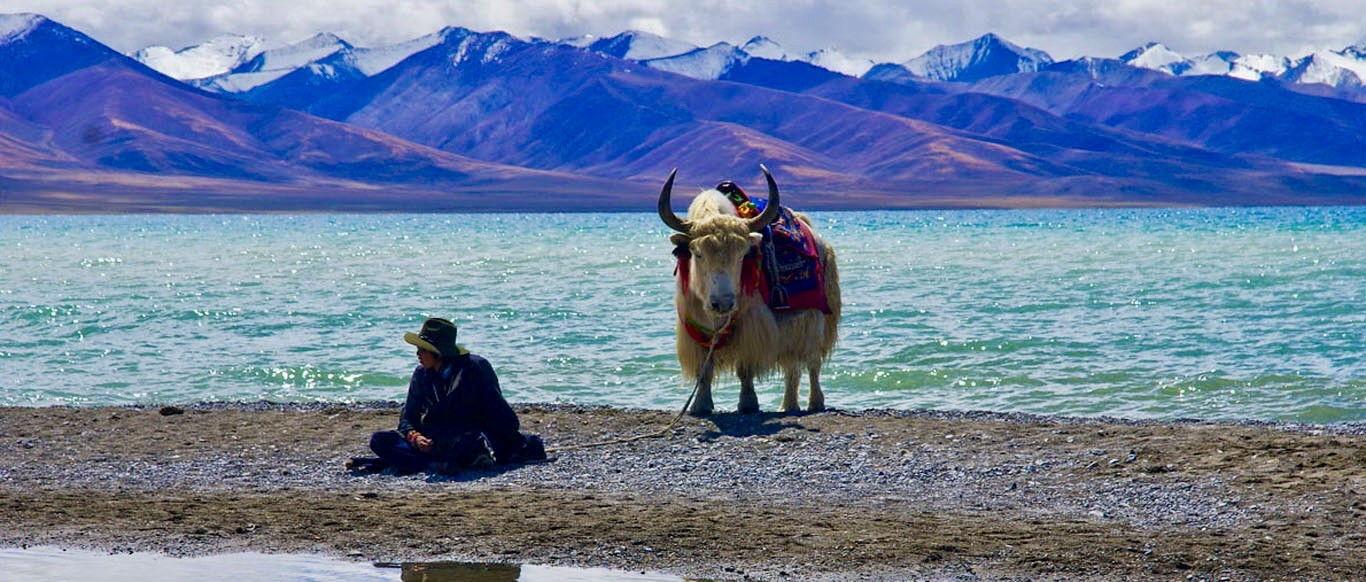
Highlights of a Stroll Around Namtso Lake
-
Scenic Beauty: Nestled at an elevation of about 4,718 meters (15,479 feet), Namtso is surrounded by majestic snow-capped mountains, including the Nyenchen Tanglha range. The crystal-clear blue waters and the wide-open skies create a mirror effect, reflecting the celestial beauty overhead.
-
Spiritual Significance: Namtso is considered a sacred site in Tibetan Buddhism. Many pilgrims visit the lake to perform a kora, a ritual circumambulation, around the lake, which is believed to bring blessings and cleanse the soul.
-
Wildlife and Flora: The area around Namtso is home to a variety of wildlife, including migratory birds, yaks, and goats. The meadows around the lake bloom with a variety of wildflowers in the summer, adding splashes of color to the landscape.
-
Photographic Opportunities: The picturesque setting of Namtso makes it a paradise for photographers. The changing light from dawn to dusk offers varied perspectives of the lake, with each hour bringing new hues and shadows, perfect for capturing stunning landscapes.
-
Accessibility and Trails: The lake is accessible via a well-paved road from Lhasa, making it a feasible day trip. For those wishing to explore more thoroughly, there are several walking trails along the lake’s perimeter which offer more immersive experiences of the natural and serene environment.
-
Cultural Interaction: Visiting Namtso provides an opportunity to interact with local nomadic communities. You can observe their traditional lifestyle, which is closely tied to the rhythms of nature, and even share a moment or meal with them.
A stroll around Namtso Lake is more than just a walk; it's an encounter with the sublime, an experience where every view is a painting and every breath fills you with peace. It's an essential Tibetan experience that Relax Getaways is proud to offer, promising lasting memories of one of Tibet's most cherished natural wonders.
Enjoy the world's highest Railway in Tibet
Experiencing the world's highest railway, the Qinghai-Tibet Railway, is a must-do for any traveler in Tibet. This engineering marvel not only connects the remote Tibetan plateau to the rest of China but also offers an unparalleled journey through some of the most stunning and inaccessible landscapes on Earth. The railway itself is a testament to human ingenuity, having been constructed across some of the most challenging terrains at altitudes where the air is thin and conditions are extreme.
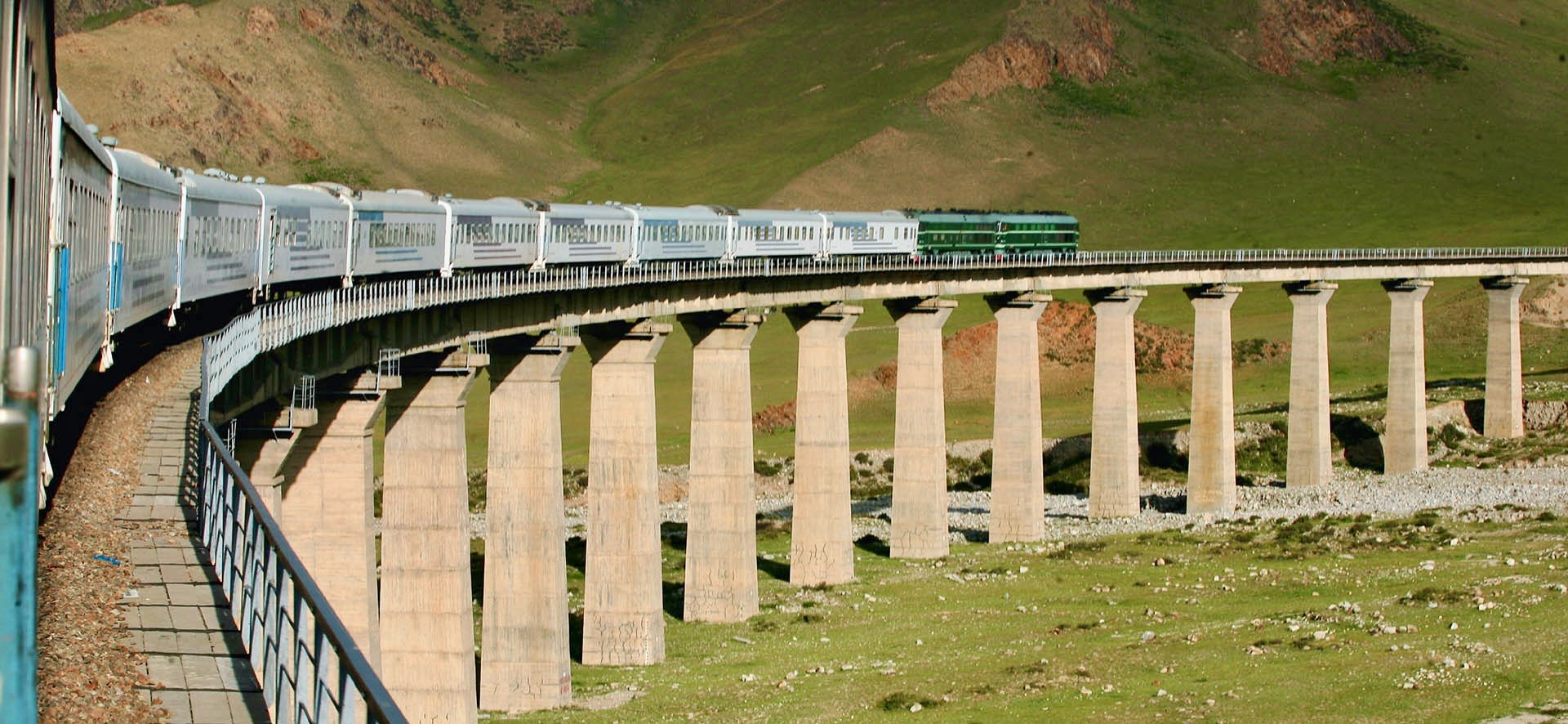
Key Features of the Qinghai-Tibet Railway
-
Altitude Achievements: The Qinghai-Tibet Railway reaches an impressive altitude of over 5,000 meters (16,404 feet) at its highest point. It includes the Tanggula Pass, which at 5,072 meters (16,640 feet) above sea level, is the highest point on any railway in the world.
-
Stunning Scenery: The train journey offers spectacular views of snow-capped mountains, vast steppes, and pristine lakes. Travelers are often treated to sightings of wildlife such as Tibetan antelope, wild donkeys, and yaks roaming the plateau.
-
Comfortable Travel: Despite the extreme environment, the trains are specially equipped to ensure passenger comfort. The carriages are pressurized, and oxygen is supplied to help with altitude acclimatization. Large windows provide panoramic views, allowing passengers to soak in the landscape from the warmth and comfort of their seats.
-
Cultural and Geographical Insight: The route passes through various cultural and geographical zones, providing insights into the diverse ecosystems and communities within Tibet. It also serves as a physical representation of the connection between the Tibetan people and the wider world.
-
Accessibility: The railway provides an essential link from mainland China to the Tibetan capital of Lhasa. It has stations in key locations, including Golmud and Shigatse, making it an accessible option for entering and traveling within Tibet, reducing travel time significantly compared to road trips.
Traveling on the Qinghai-Tibet Railway with Relax Getaways not only means witnessing the breathtaking beauty of the Tibetan plateau but also experiencing one of the modern wonders of the railway world. It's an unforgettable journey that offers both comfort and a unique perspective on the vast, untamed landscapes of Tibet. Whether you're a train enthusiast or a casual traveler, this railway journey promises an adventure like no other.
Visit Mt. Kailash
Visiting Mt. Kailash is considered one of the most sacred pilgrimages in Asia, attracting thousands of devotees and adventurous travelers each year. Located in the remote western corner of Tibet, Mt. Kailash is revered by several religions, including Buddhism, Hinduism, Jainism, and Bon, each of which attributes spiritual significance to this striking peak.
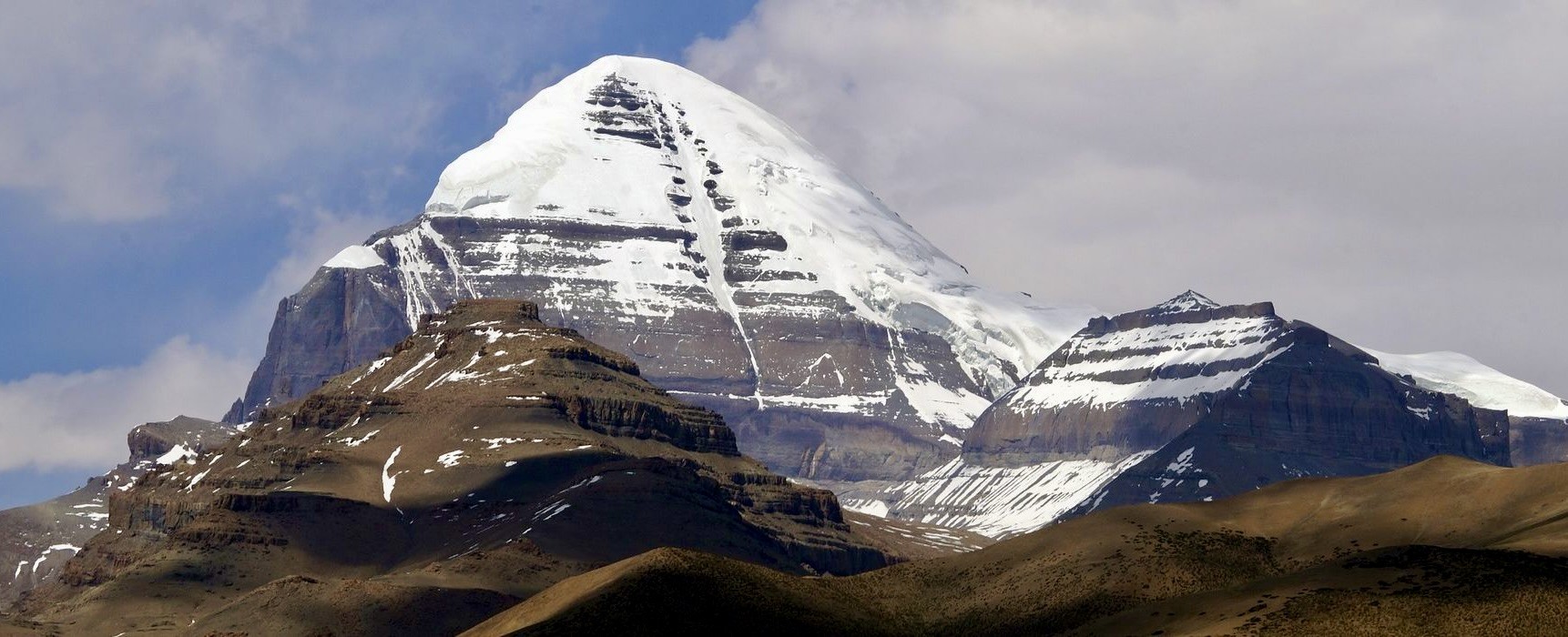
-
Spiritual Significance: For Hindus, Mt. Kailash is the abode of Lord Shiva, one of their most important deities, who resides at the peak in a state of perpetual meditation along with his wife Parvati. In Buddhist tradition, the mountain is believed to be the home of the Buddha Demchok who represents supreme bliss. Jains consider it the site where their first prophet received enlightenment, and followers of Bon, the ancient indigenous religion of Tibet, revere Kailash as the seat of all spiritual power.
-
The Pilgrimage - Kailash Kora: The primary activity for visitors to Mt. Kailash is the Kailash Kora, a 52 km (32 mi) trek that circumnavigates the sacred mountain. This challenging walk is done by hundreds of pilgrims who believe that performing the kora brings significant merit and the cleansing of sins. The trek typically takes three days and reaches altitudes of up to 5,600 meters (18,372 ft), passing through some of the most stunning landscapes in the Tibetan highlands.
-
Scenic Beauty and Cultural Experience: The journey to Mt. Kailash is as visually spectacular as it is spiritually uplifting. The route traverses lush green valleys, barren high-altitude deserts, and passes adorned with colorful prayer flags fluttering in the wind. Pilgrims and travelers will likely encounter herds of yaks and sheep and the nomadic herders who tend them, as well as monasteries and prayer sites that have stood for centuries.
Visiting Mt. Kailash with Relax Getaways offers not only a chance to witness one of the most sacred sites on Earth but also an opportunity to immerse oneself in the profound spiritual and natural beauty of Tibet. Whether you are a spiritual seeker or an adventurous traveler, the journey to Mt. Kailash is a profound pilgrimage that promises transformation and awe-inspiring insights.
Explore Potala Palace in Tibet
Exploring the Potala Palace in Tibet is a journey into the heart of Tibetan culture and history. Perched on Marpo Ri hill, 130 meters above the Lhasa valley, the Potala Palace stands as a monumental symbol of Tibetan Buddhism and is one of the most iconic architectural wonders of the world. It was the chief residence of the Dalai Lama until the 14th Dalai Lama fled to India during the 1959 Tibetan uprising. Today, it serves as a museum and a popular tourist attraction.
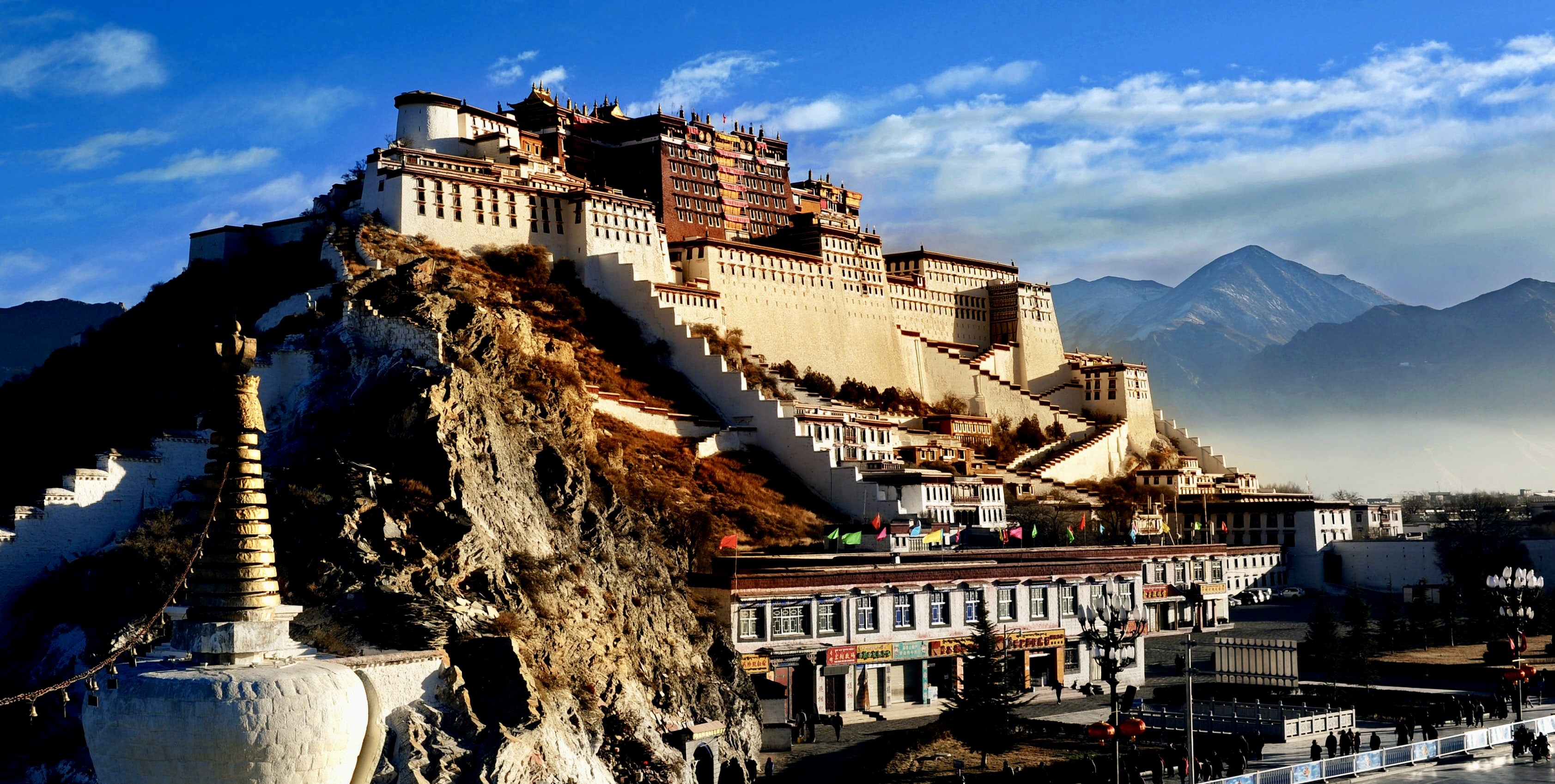
-
Architectural Grandeur and Historical Significance: The Potala Palace is renowned for its stunning architecture, which blends Indian vihara design, and Tibetan, and Central Asian styles. The structure comprises the White Palace and the Red Palace, along with additional buildings. The White Palace served as the administrative section and the living quarters of the Dalai Lama, while the Red Palace contains numerous chapels and shrines dedicated to past Dalai Lamas and Tibetan Buddhism.
-
Art and Culture Within Its Walls: The interiors of the Potala Palace are richly decorated with intricate murals that depict various aspects of Tibetan life and religion, from historical events to mystical visions. Additionally, the palace houses an impressive collection of Buddhist statues, scriptures, and sacred relics. Each room and hallway of the vast complex reveals a piece of Tibetan history, filled with artistic and spiritual treasures.
-
A Spiritual Experience: For many visitors, the Potala Palace is more than just an architectural masterpiece; it is a deeply spiritual place. The numerous temples and prayer rooms within the palace continue to be sites of worship and meditation. The atmosphere inside is heavy with the scent of juniper incense and the sound of murmured prayers, contributing to an intense sense of peace and reverence.
Visiting Tips:
-
Managing Altitude: Since Lhasa sits at over 3,500 meters (11,500 feet) above sea level, visitors should spend a few days acclimatizing in Lhasa before ascending to the palace to avoid altitude sickness.
-
Tour Duration: Visiting the Potala Palace typically takes about 1 to 2 hours, given the number of rooms and chapels open to the public. Entry is timed to prevent overcrowding, so it’s advisable to book your tickets in advance, especially during peak tourist seasons.
Exploring the Potala Palace with Relax Getaways is an enlightening journey into the spiritual, cultural, and historical heart of Tibet. Whether you are drawn by its architectural beauty, interested in Tibetan Buddhism, or seeking a connection to the rich history of Tibet, the Potala Palace offers a profound and unforgettable experience.
Visit Mansarovar Lake
Visiting Mansarovar Lake in Tibet is a spiritually uplifting and visually stunning experience. Located in the remote Western Tibetan Plateau, near Mount Kailash, Mansarovar Lake is one of the highest freshwater lakes in the world, sitting at an altitude of approximately 4,590 meters (15,060 feet). It is revered as a sacred site in several religions, including Hinduism, Buddhism, Jainism, and Bon, making it a focal point for pilgrims from around the world.
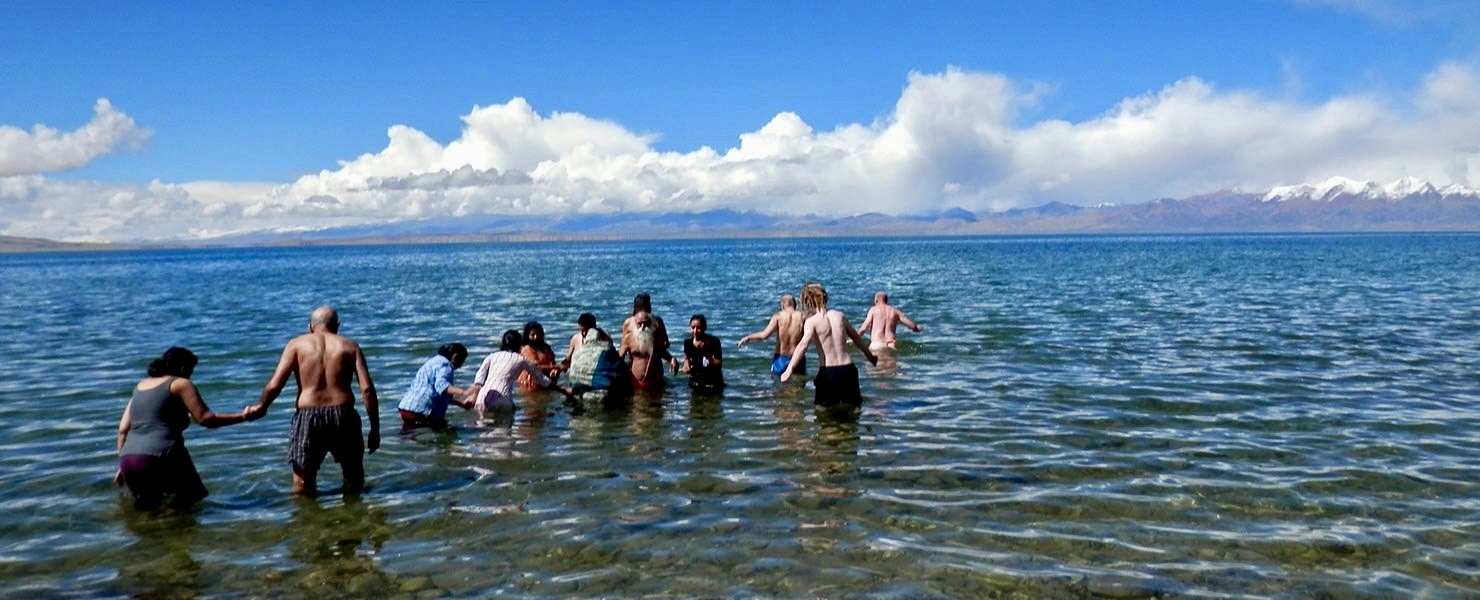
-
Spiritual Significance: For Hindus, Lake Mansarovar is believed to be the abode of purity, created by Lord Brahma in his mind, and thus named "Manasa sarovaram," which translates to "mind lake." It is thought that bathing in the lake will cleanse the sins of all lifetimes, bringing salvation. Buddhists associate the lake with the legendary lake Anavatapta, where Queen Maya is said to have conceived Buddha. The lake is also significant in Jainism as the place where the first Jain Tirthankara, Rishabhadeva, attained liberation.
-
Natural Beauty and Tranquility: The lake's crystal-clear blue waters reflect the surrounding snow-capped mountains, creating a serene and almost surreal atmosphere. The tranquility of the lake, combined with its breathtaking surroundings, makes it a perfect spot for meditation and contemplation.
Activities
-
Circumambulation (Kora): Many pilgrims perform a kora around Lake Mansarovar, a sacred walk that is believed to bring merit and spiritual benefits. The circuit around the lake covers approximately 90 kilometers and can take several days on foot, though some choose to travel by car.
-
Spiritual Practices: Visitors often engage in meditation, prayer, and ritual bathing in the lake, seeking spiritual cleansing and enlightenment.
-
Photography: The picturesque landscape around Mansarovar Lake offers ample opportunities for photography enthusiasts to capture the stunning scenery and vibrant cultural activities.
Travel Considerations: Due to its remote location and high altitude, visiting Mansarovar Lake requires careful planning. Travelers should ensure proper acclimatization to avoid altitude sickness. It's also important to respect the local customs and environmental integrity of this sacred site.
A visit to Mansarovar Lake with Relax Getaways not only offers a chance to witness one of the most sacred and beautiful natural wonders of Tibet but also provides a peaceful retreat from the hectic pace of modern life. Whether you are seeking spiritual solace, an adventure in a remote landscape, or a deeper understanding of religious traditions, Mansarovar Lake promises an enriching and unforgettable journey.
Tips for Things to do in Tibet
Traveling to Tibet offers a unique opportunity to explore one of the most culturally rich and geographically stunning regions in the world. Here are some essential tips to help you make the most of your journey and enjoy the diverse array of activities Tibet has to offer:
-
Acclimatize Properly: Tibet's high altitude can pose health risks if not properly managed. Spend a few days in a lower altitude area before ascending to higher regions like Lhasa. This will help your body adjust to the thinner air and reduce the risk of altitude sickness.
-
Respect Local Customs and Traditions: Tibetan culture is deeply spiritual and rich in tradition. Dress modestly, especially when visiting religious sites, and always ask permission before taking photos of people or religious ceremonies. Additionally, it's important to walk clockwise around religious sites and stupas, under local custom.
-
Plan Your Visit During Optimal Seasons: The best time to visit Tibet is from April to October when the weather is most favorable. This period avoids the harsh winter and the rainy season, providing clearer skies and more comfortable temperatures for outdoor activities.
-
Hire Local Guides: Not only does hiring local guides provide you with deeper insights into the cultural and historical contexts of the places you visit, but it also supports the local economy. Local guides can enhance your experience by sharing personal stories and lesser-known facts about their homeland.
-
Prepare for Remote Conditions: Many areas in Tibet are remote and lack the amenities you might be used to. Prepare for basic accommodations and food in rural areas. Carrying snacks, water purification tablets, and extra layers of clothing can make your journey more comfortable.
-
Obtain Necessary Permits: Tibet has strict entry and travel regulations. Ensure you have all necessary permits arranged through a travel agency before your trip. These include the Tibet Travel Permit, the Alien Travel Permit, and others, depending on the areas you plan to visit.
-
Embrace Slow Travel: Given the vast distances and challenging roads, travel within Tibet can be slow. Use this time to soak in the landscapes and reflect on your experiences. Embracing a slower pace can enhance your appreciation of Tibet's stunning natural beauty.
-
Be Prepared for Basic Medical Needs: Access to medical facilities can be limited, especially outside of Lhasa. Carry a basic medical kit, including medication for altitude sickness, and ensure you have adequate travel insurance that covers medical evacuation.
-
Explore Beyond Lhasa: While Lhasa is rich in history and culture, exploring rural areas like the Everest Base Camp, the sacred Mount Kailash, or the breathtaking Namtso Lake can provide a fuller picture of Tibet's diverse landscapes and cultural heritage.
-
Practice Environmental Responsibility: The ecological balance in Tibet is delicate. Practice leave-no-trace principles by disposing of waste properly and minimizing your environmental impact during treks and tours.
By following these tips, your visit to Tibet can be a fulfilling adventure, immersing you in the natural beauty and spiritual depth of this extraordinary region. Whether you're trekking through the Himalayas, exploring ancient monasteries, or participating in local festivals, Tibet offers a profound and unforgettable experience.
Ideal Time for Things to do in Tibet
Planning a trip to Tibet by season can help you tailor your travel experience based on your interests and the type of activities you enjoy. Here's what you can expect from each season in Tibet, along with the best activities for that time of year:
-
Spring (April to June): Spring in Tibet sees temperatures gradually warming, though nights can still be chilly. The season starts off dry but can see occasional rain showers as it progresses. This transitional period is marked by a refreshing change in the landscape as it emerges from the harsh winter.
-
Summer (July to August): Summer is the warmest time of the year in Tibet and also coincides with the monsoon season. Expect warmer days tempered by periodic rain showers, especially in July and August. Despite the rain, this season sees lush landscapes and comfortably warm temperatures.
-
Autumn (September to November): Autumn is considered one of the best times to visit Tibet due to its clear and stable weather. Rainfall diminishes, temperatures are mild, and the air is crisp, providing excellent conditions for experiencing Tibet's vibrant fall colors and clear mountain views.
-
Winter (December to March): Winter in Tibet is cold with temperatures often dropping below freezing, especially during the night. However, the skies are typically clear, and there is minimal precipitation, making the landscape stark but beautifully dramatic under the bright winter sun.
Each season in Tibet offers a distinct climate, impacting how you might plan your visit based on personal comfort with temperature and weather conditions.
The varied seasons of Tibet present different chances and challenges for visitors. Tibet is a location that offers meaningful experiences all year around, whether you are rugged in the cold, bright winters or enjoying the mild and culturally abundant spring. Every season not only defines the weather but also molds the terrain and the opportunities for interaction with the magnificent natural beauty and cultural riches of Tibet. Travelers can guarantee a memorable and rewarding trip through this magical region by knowing the seasonal fluctuations and therefore better planning their visit to meet their weather and comfort requirements.
FAQs for Things to do in Tibet
Q: What are the top must-visit attractions in Tibet?
A: The top attractions in Tibet include the Potala Palace in Lhasa, Mount Kailash, Lake Mansarovar, Namtso Lake, and historic monasteries like Tashilhunpo and Sera. Each offers a unique glimpse into Tibet's rich cultural and spiritual heritage.
Q: Do I need any special permits to travel in Tibet?
A: Yes, all foreign travelers need a Tibet Travel Permit in addition to a Chinese visa. Depending on your itinerary, additional permits like the Alien's Travel Permit and the Military Permit may also be required.
Q: What is the best time to visit Tibet?
A: The best time to visit Tibet is from May to October when the weather is most favorable for outdoor activities and sightseeing. This period also coincides with several Tibetan festivals, providing a richer cultural experience.
Q: How should I prepare for the high altitude in Tibet?
A: Acclimatize properly by spending a few days at a moderately high altitude before ascending to higher areas like Lhasa or Mount Kailash. Stay hydrated, eat light but frequent meals, and consult with your doctor about altitude sickness medications if necessary.
Q: Can I experience local Tibetan culture during my visit?
A: Absolutely! Engage with local culture by visiting Tibetan markets, trying Tibetan cuisine, participating in local festivals, and staying in Tibetan guesthouses. Always approach cultural interactions with respect and sensitivity.
Q: What are some recommended activities for adventure seekers in Tibet?
A: Tibet is ideal for trekking, with popular routes like the trek around Mount Kailash or the journey to Everest Base Camp. Mountain biking and motorbiking across the Tibetan plateau also offer thrilling adventures.
Q: Is it possible to ride the Qinghai-Tibet Railway?
A: Yes, the Qinghai-Tibet Railway offers a unique and scenic way to travel to Lhasa from mainland China, providing spectacular views of the Tibetan landscape along the way. It's an experience not to be missed for its unique engineering and breathtaking routes.
Q: What should I pack for a trip to Tibet?
A: Pack layers of clothing to adjust to the varying temperatures, including warm layers for cold weather and windproof jackets. Sun protection is crucial, so include sunscreen, sunglasses, and a hat. Also, bring personal medications, a first-aid kit, and any dietary supplements you might need.
Q: How can I ensure a responsible and ethical trip to Tibet?
A: Travel with a reputable tour company that respects local customs and environmental practices. Support local businesses, avoid buying products made from endangered animals, and be considerate of religious and cultural sites by following all local guidelines and requests.
Q: Are there any health considerations I should be aware of before traveling to Tibet?
A: Besides altitude sickness, visitors should prepare for the dry, cold climate, which can exacerbate certain health conditions. Bring moisturizers and lip balms to combat dry skin and lips, and consider comprehensive health insurance that covers emergency evacuation.
For the Tibet Tour, please click here.
If you are looking for different kinds of Tibet Packages, feel free to contact us.
